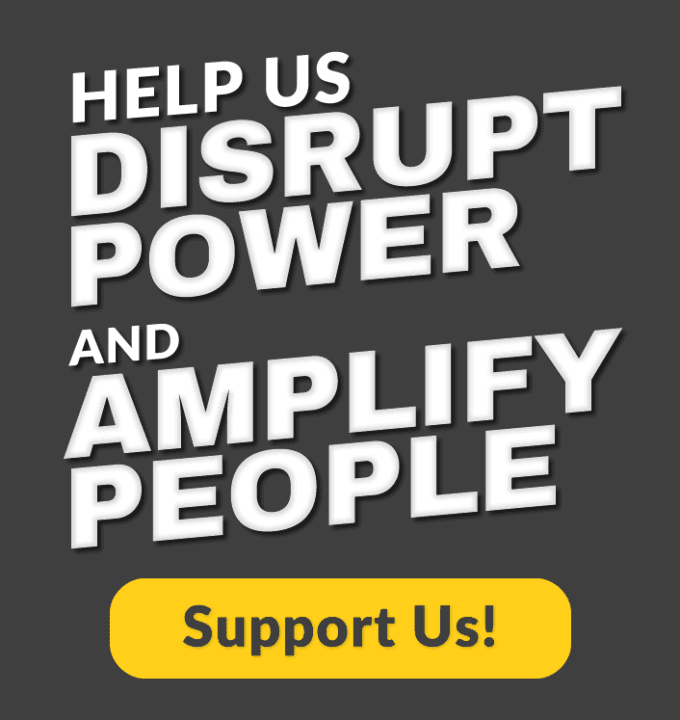A new report into the state of disabled people’s rights in Iran has recently been released. It paints a torrid picture of the lives of millions of people in the country. However, while Iran has got a long way to go before its disabled citizens even begin to have any form of equal rights – is life in the UK for disabled people any better?
Iran and life for disabled people
Volunteer Activists (VA) has released detailed report examining the state of disability rights in Iran from 2020 to 2024. This report provides valuable insights into the challenges faced by disabled individuals and the ongoing protests advocating for their rights.
Despite the government’s legislative commitments, such as the 2004 Law for Persons with Disabilities and its accession to the UN Convention on the Rights of Persons with Disabilities (UNCRPD), the reality for many disabled Iranians remains fraught with barriers and systemic neglect.
The report highlights the continued rise in disability rights protests, driven by rampant inflation and inadequate support services.
Drawing from firsthand accounts, media reports, and social media analysis, VA’s research uncovers the severe social isolation, economic hardship, and abuse experienced by disabled individuals in Iran. The report also shows how the ‘Women, Life, Freedom’ movement has inspired disabled activists to persist in their demonstrations despite government crackdowns.
The report found:
Prevalence of Disability: Official data places disability prevalence in Iran at 115 per 1,000 people (approximately 11.5%), though other sources argue this figure underrepresents the reality, particularly since the state welfare database lists just 1.6 million disabled individuals out of a population of 85 million.
Economic Challenges: An estimated 60% of disabled Iranians are unemployed, with many living well below the poverty line. The government stipend, ostensibly tied to the minimum wage, remains grossly insufficient at around 1 million tomans ($15) per month.
Education Barriers: Out of 1.5 million school-aged children with disabilities, only 150,000 were enrolled in school during the 2018-2019 year. Most were in segregated settings.
Healthcare Access: Iranians with disabilities face severe healthcare shortages. For example, only two mammogram machines are available for visually impaired women in Tehran, and medication shortages for conditions like thalassemia and hemophilia have led to thousands of deaths.
The lived reality
More broadly:
- Due to a lack of adaptations in public infrastructure and insufficient aid at home, many disabled Iranians experience social isolation.
- The lack of government support often leaves family members of disabled individuals overstretched.
- There have been various instances of (deadly) abuse in government homes for disabled people, and disabled Iranians sometimes also face verbal or physical abuse from family members.
- Due to their often difficult life circumstances, many disabled Iranians experience trauma and psychological stress. However, specialised help is rarely available or is only accessible to the wealthy.
- Families of children with rare conditions, like epidermolysis bullosa, have been forced to seek asylum abroad due to the unavailability of critical treatments.
The report integrates personal stories that highlight the daily struggles of disabled Iranians.
Kamran Doplurei, a wheelchair user, undertook a 115-kilometer journey to protest inadequate government support. He lamented that “we face not only physical pain but also anxiety over meeting our basic needs, especially with soaring inflation”:
No one chooses to be disabled… Although the law provides for various rights and services, in practice, less than five percent of these commitments are fulfilled.
Meanwhile, Samaneh Shabani, a blind activist, described the heightened challenges during the Covid-19 pandemic, noting how deserted streets disrupted her navigation and left her feeling isolated. The report noted:
This combination of factors not only complicated safe navigation but also increased anxiety during an already challenging time. In addition to highlighting barriers faced by blind individuals, Shabani raised awareness of obstacles affecting all disabled people, as well as domestic violence against disabled women.
So, on the face of it seems that life for disabled people in Iran is in no way comparable with that for disabled people in the Global North.
However, is that really the case?
The UNCRPD
For example, the UNCRPD has criticised both Iran and the UK, though the nature of the violations differs.
Iran’s violations include, for example, non-Implementation of Laws. While Iran has enacted the Comprehensive Law on the Protection of Persons with Disabilities, only 5% of its provisions are realised in practice. Key policies like Article 27, which guarantees a stipend matching the minimum wage, are largely ignored. There is also systemic stigma towards disabled people in Iranian society. Conservative and religious beliefs perpetuate the notion that disabilities are a form of divine punishment, leading to widespread discrimination.
Iran’s government demonstrates a pattern of tokenism, as seen in its announcement of job quotas and housing programs that fail to account for logistical barriers faced by disabled citizens. Protests by the disabled community, like those demanding the implementation of Article 27, are often met with police suppression, with activists like Behrouz Morvati being detained.
Moreover, government responses such as the Seventh Development Plan have slashed social support provisions, further alienating disabled Iranians. The report’s evidence of abuse in state-run care homes underscores the lack of accountability and oversight.
The UK is not any better – relatively speaking
However, in the UK the UNCRPD made similar and damning criticisms of successive British governments.
Overall, in 2016 the UN accused the UK of “grave and systematic violations” following austerity measures that cut disability benefits and support services. Disabled people in the UK have reported increased poverty, social exclusion, and worsening mental health. Specifically, the UNCRPD lamented that UK social security was not enough for disabled people to live on. Crucially, the chair of the UNCRPD also highlighted that, as the Canary previously reported:
the UK government and the media “have some responsibility” for society seeing disabled people as “parasites, living on social benefits… and [living on] the taxes of other people”. And she said these “very, very dangerous” attitudes could “lead to violence… and if not, to killings and euthanasia”
The point being, while disabled people in Iran are systemically marginalised in a way that their peers in the UK may not experience, the situation is relative. Iran is in the Global South. The UK is supposed to be a world leader in disabled people’s rights – yet the UNCRPD shamed it.
Comparatively, therefore, for countries in the Global North to take the moral high ground over disabled people’s rights in Iran without addressing the persecution and discrimination on their doorsteps reeks of colonialism and white supremacy.
A way forward for disabled people in Iran?
To address the challenges for disabled people in Iran, the report suggests:
- Domestic Reforms: Strengthening accountability mechanisms for law enforcement and enhancing disability rights in development plans.
- International Support: Leveraging international alliances to pressure Iran into compliance with the UNCRPD.
- Activist Collaboration: Encouraging grassroots advocacy and improving organisational structures.
VA calls on the international community to enhance their support for disability rights activists in Iran. By fostering stronger connections between foreign and Iranian disability rights organisations and prioritising socio-economic rights, global donors can help amplify the voices of disabled individuals and advance their rights.
While both Iran and the UK face criticism for their treatment of disabled citizens, the systemic issues in Iran – rooted in cultural stigma, economic neglect, and political repression – present more severe barriers to equality.
To ensure progress, the Iranian government must move beyond superficial measures and address the structural inequities that perpetuate marginalisation. The voices of activists and international advocacy remain critical in achieving this transformation.
Featured image supplied





















